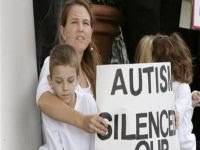World Autism Awareness Day
The challenge is to understand the peculiarities of autistim... The (2nd), is World Autism Awareness Day. Autism is a condition found in 20 out of every 10,000 births. It manifests itself before the age of 3, and its cause is still unclear, although genetic factors are considered their primary origin.

by Flávia Villela
A representative of the Coordination of Educational Inclusion of the State Department of Education Rio, Norma Curty, recognizes that the large number of students in classrooms undermines not only the learning of the autistic, but all students.
"A reduction is important for learning any subject. We have already reduced the number slightly, but it is still high, with a limit of 50 students per class. For now, we cannot decrease this. But for the classic autistic child, with limited understanding, the department offers monitors to accompany the child and facilitate the mediation between them, the learning process, teachers and friends. "
A representative of the secretariat said that some 40 monitors are helping severe cases of autism, those in wheelchairs with limited mobility, among other students with severe impairment.
She recalled that classic autism entails greater impairment in communication and language. She said those with Asperger's Syndrome have a good level of intelligence and very developed learning, but difficulties in social interaction and communication similar to a classic autistic.
Last year, state schools served 34 students with autism in the second segment of elementary school and middle school. A core teacher guides these specialized schools and teachers in monitoring these students, and they have multifunctional resource rooms for support.
For Norma, reducing the number of students in the classroom is not the only answer to the problem of inclusion and one of the biggest challenges is to understand the peculiarities of the autistic in order to be able to effectively help them in the learning process.
"The greatest anguish of the teacher is dealing with the silence, the absence of the student and understanding how to go and take that student out of isolation. Our teams are training these teachers throughout the year in all areas, not just autism." She said to remember that inclusion is not just the school. It is a joint work: family, school, society and public policies to meet the needs of these students. There is a whole attitude of acceptance, being free from prejudices, stigmas and fears."
The director of the Helena Antipoff Institute, a referral center for special education in the city of Rio, Katie Nunes, says that the number of students in the room is not the biggest problem, but rather the lack of information and preparation of teachers to deal with students with different disabilities and syndromes, a relatively new phenomenon.
"We have to have a teacher researcher, an observer, with a new look at the face of diversity, which meets the specific needs of those students who were home before and are now in the schools," she said. According to her, there are teachers who do a great job with 30 students in class and others who cannot work well with ten.
Katia said the city serves approximately one thousand students with Global Developmental Disorders (GDD) - all kinds of autism and childhood psychoses. In addition to a week of teacher training at the beginning of the school year, the district offers continuing education on the different types of disabilities, facilitators and support classes outside school hours.
However, she said, disciplines are missing in universities for the training of special education teachers.
Translated from the Portuguese version by:
Lisa Karpova
Pravda.Ru
Subscribe to Pravda.Ru Telegram channel, Facebook, RSS!


